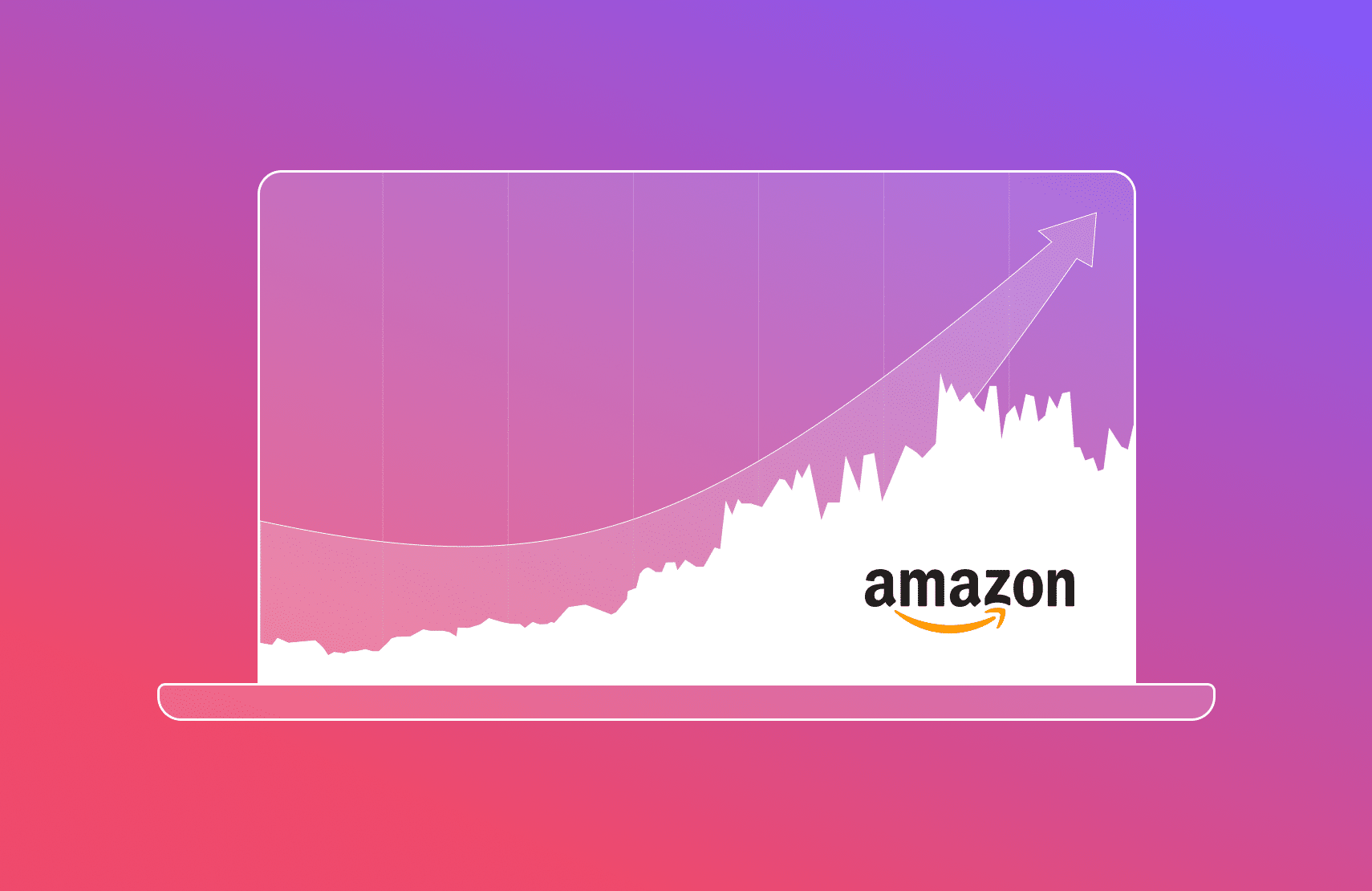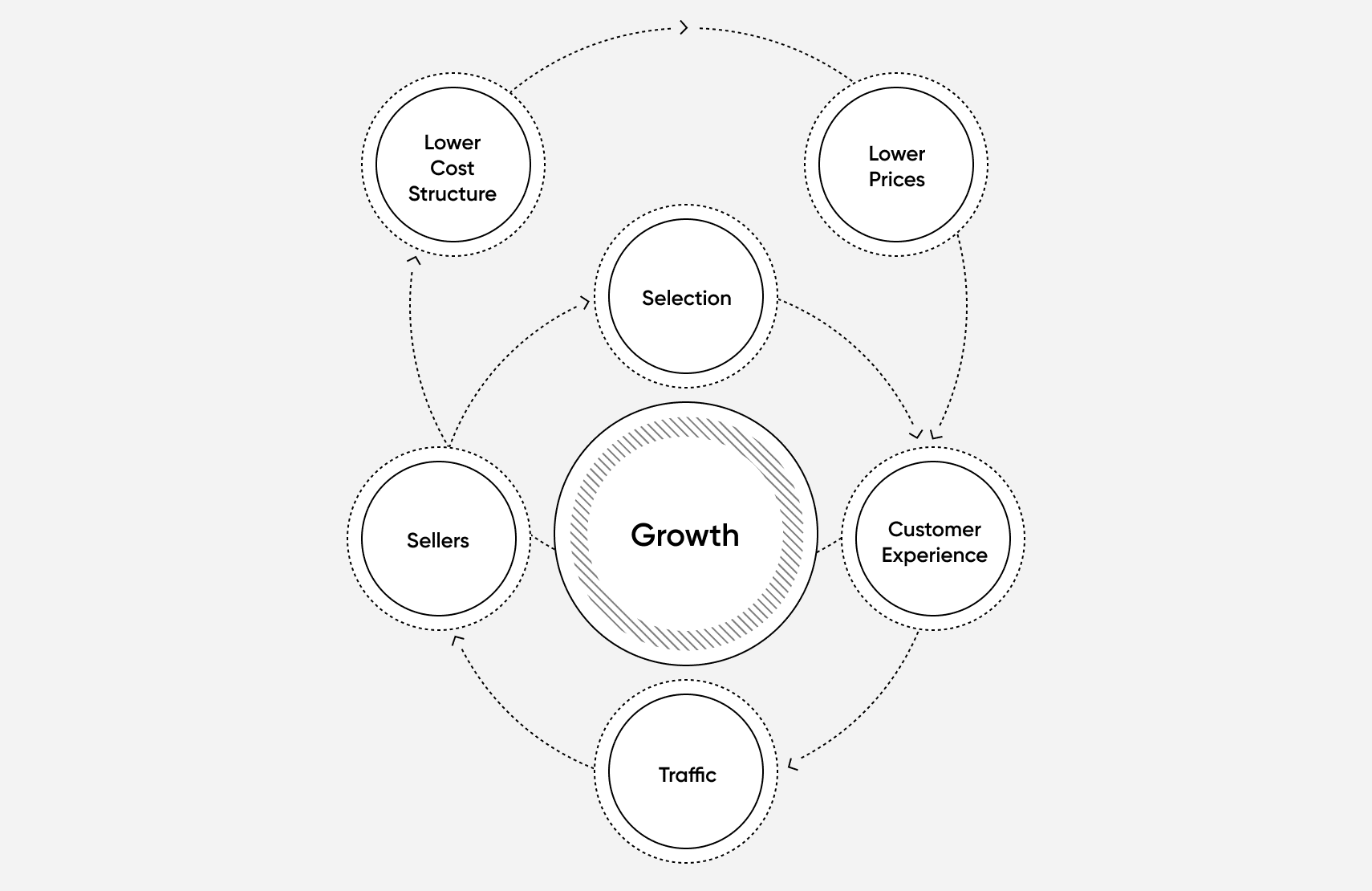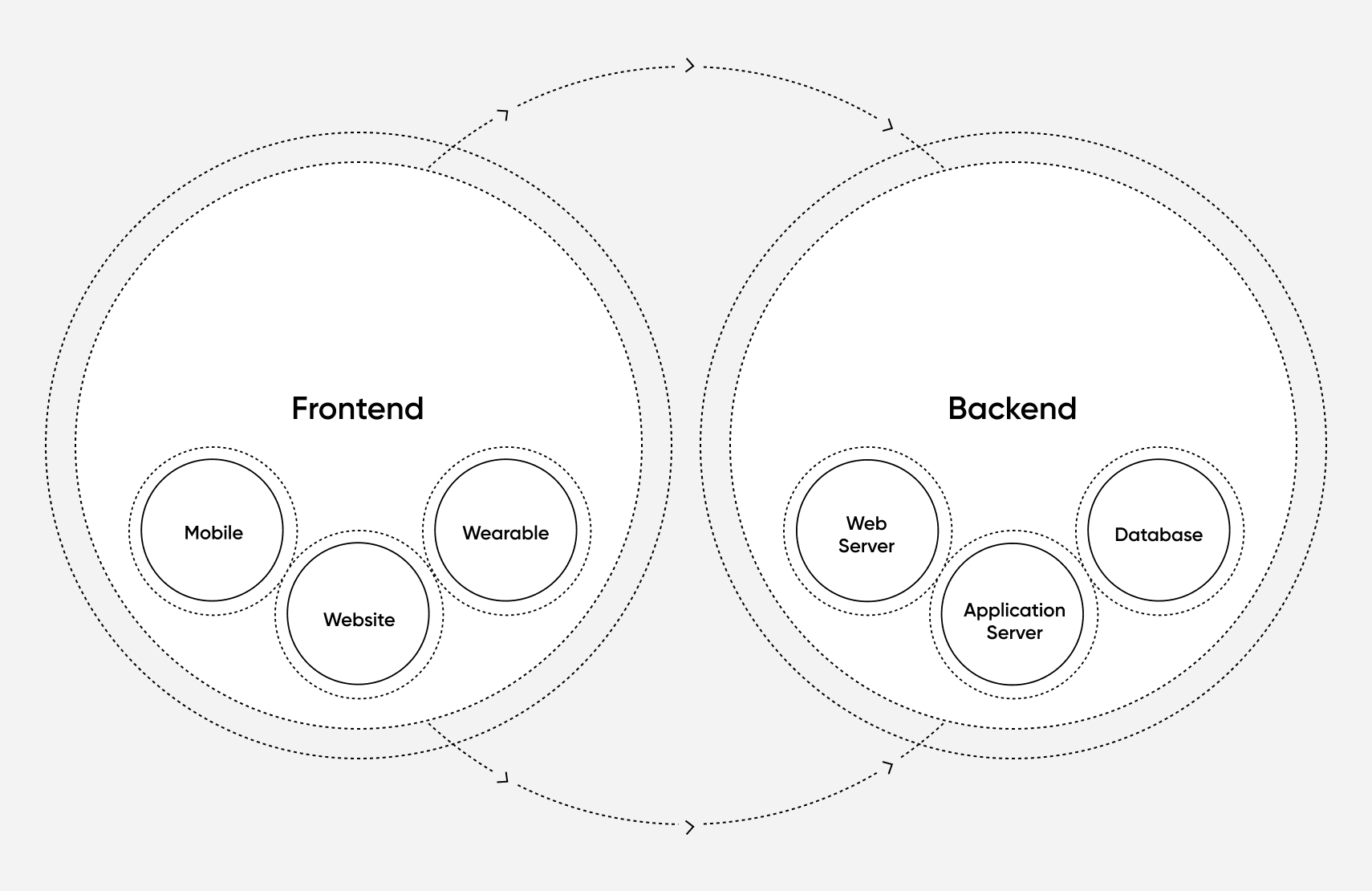How To Scale Your E-Commerce Business Like Amazon

E-commerce is at its peak, with 2.14 billion shoppers patronizing digital marketplaces in 2021.
Amazon utilizes its flywheel strategy, highly personalized website, and FBA services to attract 5.2 billion visitors monthly.
You can scale your e-commerce business like Amazon by designing a customer-centric business strategy, utilizing headless commerce, automating workflows with an OMS, and fulfilling orders with 3PL providers.
With headless commerce at fabric and fabric OMS, you can successfully scale your business like Amazon.
Recent years have witnessed tremendous growth in e-commerce. In 2021 alone, 2.14 billion people shopped online. This growth will continue with digital marketplaces expected to facilitate 98% of purchases in 2040.
Amazon is a notable force among those marketplaces. The e-commerce platform continues to receive 5.2 billion visitors monthly. What started as an online bookstore has evolved into a robust digital ecosystem where customers interact with small and medium businesses (SMBs).
Characterized by affordability, swift deliveries, and variety, it’s no surprise that the Amazon e-commerce platform is the leading marketplace in the U.S. As of 2020, its net sales were worth 386 billion U.S. dollars. If you’re looking to scale your e-commerce website, you need to think like Amazon.
[toc-embed headline=”Step One: Put Your Customer First”]
Step One: Put Your Customer First
Your business strategy is what sets you apart from the crowd. An important aspect of your business strategy is your customers. Amazon’s customer-centric model is proof of this.
“We see our customers as invited guests to a party, and we are the hosts. It’s our job every day to make every important aspect of the customer experience a little bit better”, says Jeff Bezos, CEO of Amazon.
In 2001, Bezos designed a flywheel strategy, which he called the “Virtuous cycle”. The virtuous cycle is a loop of events powered by the customer experience. When customers have a great online shopping experience, 72% of them will most likely share their experience with more than six other people. Bezos believed that such a scenario would be the catalyst for a spike in inbound traffic.
More sellers and buyers would join the marketplace, causing an increase in product selections and competition between third-party sellers. In a bid to attract customers, sellers will lower the prices of their products. The end result is a respinning of the flywheel where customers have a great experience once again, and the marketplace continues to grow.
The biggest takeaway from Bezos’s flywheel is the importance of knowing your customers. 86% of customers expect businesses to provide solutions and create an advisor relationship with them, rather than just sell them products.
Personalizing your e-commerce website like Amazon provides customers just that. The e-commerce platform leverages a segmentation strategy to profile customers and drive relevant product offers to improve their shopping experience.
For example, whenever a customer browses through products on Amazon, the website pulls data from their search journey. Using this data, it displays product recommendations under menus like “Recommended for You”, “Frequently Bought Together”, and “Customers who bought this item also bought”.
This makes customer purchase decisions easier and triggers impulse buying. Businesses that offer personalization like Amazon could expect 17% more revenue than those that rely on basic sales methods.
[toc-embed headline=”Step Two: Invest in Microservices”]
Step Two: Invest in Microservices
Break down services with APIs
Amazon decided to create a decoupled architecture where functions could only communicate through APIs. To do this, they started restructuring their applications into smaller pieces. Each function was broken out into an individual service. Developers took the functional code and added a web interface. They then began using the service to run that commerce function. Everything from the search engine to the shopping cart had its own service.
Amazon changed its organizational structure to better suit the new e-commerce architecture. Before, Amazon’s development teams worked together on applications. This meant that any releases had to be organized across teams.
They decided to move to small autonomous teams of developers. Each independent service was assigned to one of these teams. Developers could invest all their focus on a single service. This helped Amazon identify and resolve development issues more efficiently.
Amazon’s distributed architecture became an early example of what is now known as microservices. Applications are broken down to a single function, communicating through APIs. With microservices, Amazon had unlimited flexibility. They could edit or add commerce functionality to their e-commerce system as they saw fit.
Note: Amazon began making in-house solutions like AWS available to customers sometime after this which played a big role in helping other companies create service-oriented architectures.
Personalize with headless commercec
Scaling your business with headless commerce is the best way to grow your business. By separating the frontend from the backend, features can be added and removed from the digital storefront without compromising the site performance.
In this way, you have flexibility in design and creating a personalized experience for customers. This differs from traditional monolithic architectures that limit you. With headless e-commerce, you determine the presentation framework of the website and what customers see the moment they interact with your touchpoints. You can even build different layouts for different devices and locations.
A company that has invested in headless commerce like Amazon is Rothy’s. The Fashion company combines Shopify and a headless CMS to create a headless architecture. Rothy’s was then able to design multiple digital storefronts to fit different locations. That way, customers could access the website in their languages. This improved conversion rates and helped Rothy’s boost annual revenue to $140 million.
[toc-embed headline=”Step Three: Automate Systems”]
Step Three: Automate Systems
Invest in an OMS
Fulfillment by Amazon (FBA) was designed to help sellers monitor their fulfillment processes. With FBA, sellers send their merchandise to Amazon’s warehouses and the software is automatically updated to reflect the items.
From that point, Amazon is in charge of picking, packing, and sending the packages to the customers. If a customer returns their purchase, FBA will handle that and send a notification. Amazon also offers customer support services to handle complaints.
If it is any indication, leveraging automation plays a crucial role in eliminating bottlenecks in e-commerce businesses. With the right software or A.I. technology on your side, you will have an aerial view of your warehouses and control over fulfillment processes. This will help you monitor inventory and prevent business losses incurred from over and understocking.
It will also save time wasted using manual methods, such as spreadsheets. 46% of businesses use such manual processes in their workflow. This increases the chances of human error, one of the leading causes of business data loss.
With an order management software (OMS) system, you can fulfill orders and manage inventory like Amazon. An OMS automates and streamlines processes involved in fulfilling customer orders. This includes collating orders, processing fulfillment information, and updating product inventory immediately after the order is fulfilled. An OMS will give you visibility into your inventory and increase accuracy in order fulfillment.
Another benefit of OMS is saving time. Since you can see stock levels in real-time, it will help you restock products before they run out. 75% of organizations that used automation in their workflow have reported saving over four hours.
Looking for other ways to incorporate automated processes will also help save time and resources. Other processes you can automate in your e-commerce business include:
- Merchant onboarding process with custom sign-up forms, profile management systems, and underwriting
- Customer support, returns, and refunds processes
- Order processing and inventory management
- Data collation
- Accounting and records keeping
- Social media marketing
Automate deployment systems
Decoupling its services helped Amazon create one of the first automated release pipelines. The deployment system was the early version of Apollo which Amazon eventually made available to customers. The system helped Amazon automate manual software delivery processes, enabling developers to use continuous integration and continuous deployment (CI/CD).
CI/CD gave Amazon the ability to rapidly test code while reducing human error. Code is compiled in a central repository, then put through automated tests. This helps Amazon detect issues before they become a bigger problem.
The ability to make changes quickly has helped drastically reduce the number of outages for Amazon. Since enhancing its release pipeline, Amazon averages mere seconds between new code deployments.
[toc-embed headline=”Step Four: Partner with Third-Party Logistics”]
Step Four: Partner with Third-Party Logistics
FBA utilizes third-party logistics (3PLs) providers to help fulfill customer orders, and also do it quickly by offering same-day deliveries. With FBA, sellers deliver their products to Amazon and the logistics service handles the rest. That includes everything from picking, packing, and shipping to customers.
3PLs have experience and expertise that will significantly reduce the rate of human error, which is one of the major causes of business losses. This help to increase efficiency in product shipments and reduce the cost of handling logistics yourself.
As your e-commerce website grows like Amazon, relying on first-person logistics (1PLs) can break your bank. Since you are responsible for acquiring the machines and resources needed to handle shipping, you will spend a lot of money.
Partnering with 3PLs will save both time and money. They reduce the costs and burden of handling deliveries on your own by providing their technological resources. This will reduce inefficiencies in your logistics processes, and give you the freedom to focus on building, funding, and managing other vital aspects of your business.
3PL providers will also broaden your business’s reach into other locations where you don’t have a presence. So you wouldn’t need to build new distribution networks or warehouses in those locations, which will require huge capital investments and put a strain on your existing network.

Content marketer @ fabric. Previously marketing @ KHON-TV and Paramount Pictures.

